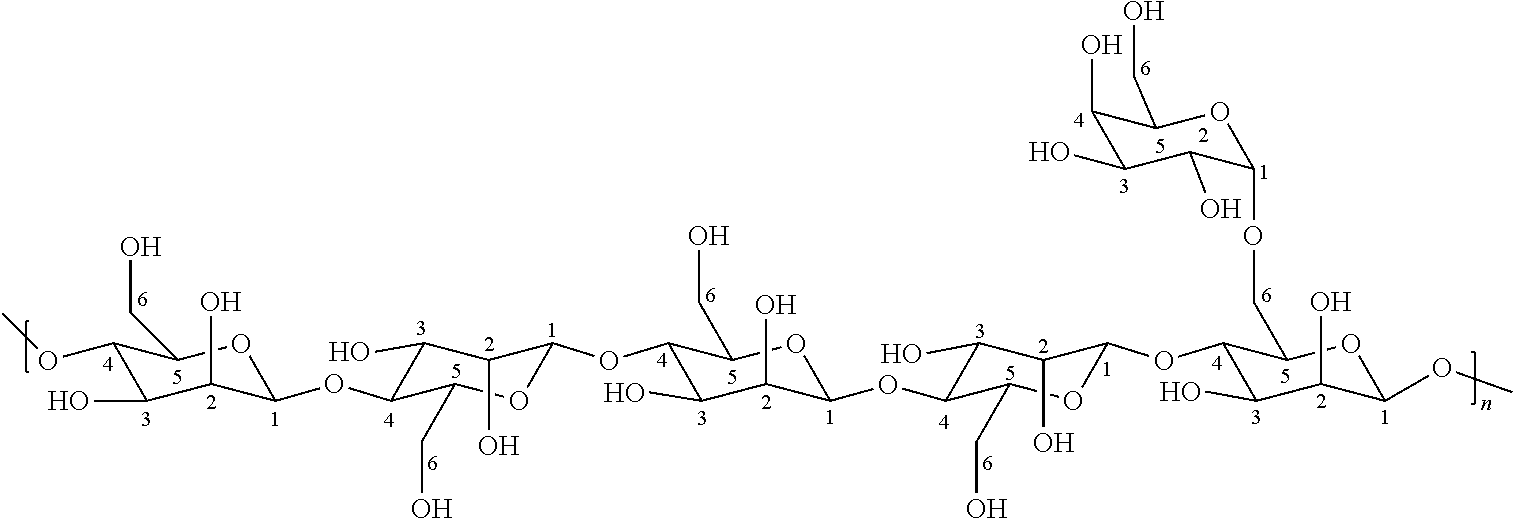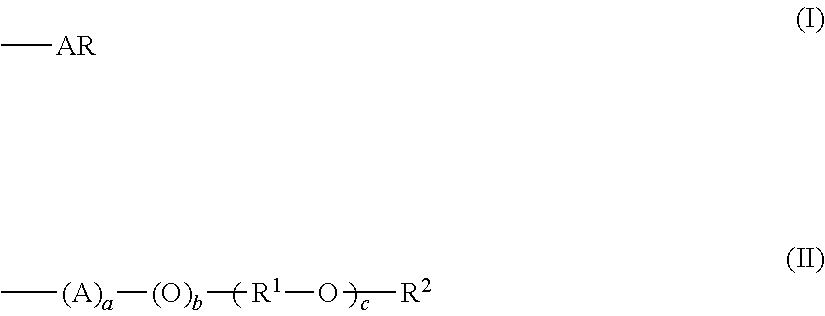Cassia Derivatives
a technology of derivatives and galactomannan, which is applied in the field of cationically and amphiphilically modified galactomannan polymers, can solve the problems that the natural form of galactomannan has suffered some drawbacks, and achieves the effect of better thickening profiles and better sensory profiles
- Summary
- Abstract
- Description
- Claims
- Application Information
AI Technical Summary
Benefits of technology
Problems solved by technology
Method used
Image
Examples
example a
[0225]To a reaction vessel 160 g of Cassia gum (containing about 10% moisture) obtained from the endosperm of Cassia tora and Cassia obtusifolia is added to a solution of 921 g of 44% isopropanol and slurried. To this slurry, 4.5 g of potassium hydroxide is added and the mixture is heated at 40° C. for 30 minutes under a nitrogen blanket. 92.8 g of 2,3-epoxypropyltrimethyl ammonium chloride (Quab 151 from SKW Quab Chemicals Inc, 70%) is then added to the slurry. The reaction slurry is heated to 70° C. and the reaction is allowed to proceed at this temperature for 3 hours. After cooling to 50° C., the mixture is diluted with 380 g of 99% isopropanol and neutralized to a pH of about 7.0 with glacial acetic acid. The hydroxypropyltrimethyl ammonium chloride Cassia product is filtered, washed once with 380 g of 99% isopropanol, air dried overnight and oven dried at 100° C. for 4 hours to produce 179.3 of cationically derived Cassia. The final product contains 2.18 wt % nitrogen or DSI o...
example 1
[0226]To a reaction vessel 50 g of hydroxypropyltrimethyl ammonium chloride cassia having a nitrogen content of 3.3 wt. % or DSI=0.59, as described in example A, is added to a solution of 306 g of 44% isopropanol. 0.65 g of 20% sodium hydroxide is added followed by 10.70 g of phenol(EO)5 glycidyl ether (Denacol EX-145, from Nagase Chemtex Corp). The mixture is stirred at 40° C. for an hour minutes under nitrogen. The slurry is heated to 70° C. and allowed to cook at this temperature for 3 hours. After cooling to 50° C., the mixture is neutralized to a pH of about 7.0 with dilute acetic acid. The cationically and amphiphilically modified cassia product is filtered, washed once with 135 g of 99% isopropanol, air dried overnight and oven dried at 100° C. for 4 hours. The final product contains 2.71 wt. % nitrogen on a dry weight basis.
example 2
[0227]The procedure of Example 1 (DSI=0.59) is followed except that 26.1 g of lauryl alcohol (EO)15 glycidyl ether (Denacol EX-171 from Nagase Chemtex Corp.) and 1.90 g of 20% sodium hydroxide are used. The final cationically and amphiphilically modified cassia product contains 2.85 wt. % nitrogen on a dry weight basis.
PUM
| Property | Measurement | Unit |
|---|---|---|
| molecular weight | aaaaa | aaaaa |
| molecular weight | aaaaa | aaaaa |
| molecular weight | aaaaa | aaaaa |
Abstract
Description
Claims
Application Information
 Login to View More
Login to View More - R&D
- Intellectual Property
- Life Sciences
- Materials
- Tech Scout
- Unparalleled Data Quality
- Higher Quality Content
- 60% Fewer Hallucinations
Browse by: Latest US Patents, China's latest patents, Technical Efficacy Thesaurus, Application Domain, Technology Topic, Popular Technical Reports.
© 2025 PatSnap. All rights reserved.Legal|Privacy policy|Modern Slavery Act Transparency Statement|Sitemap|About US| Contact US: help@patsnap.com



